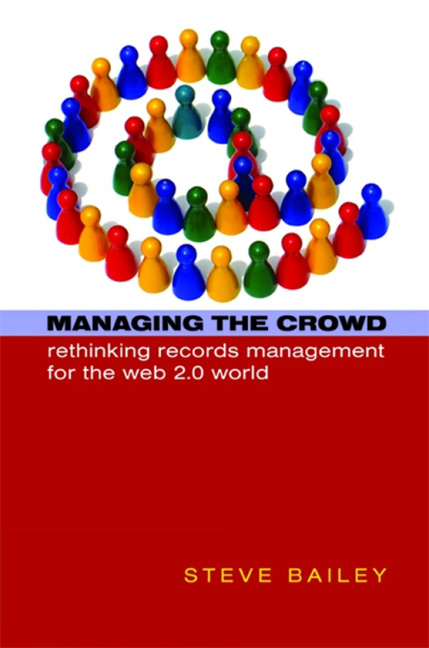Book contents
- Frontmatter
- Dedication
- Contents
- Foreword
- Preface
- Part 1 The Nature Of The Changing World
- 1 The big picture: Web 2.0 and current trends in IT
- 2 The reality check: surely change is endemic in IT?
- 3 Web 2.0 and Office 2.0: enter the third paradigm
- 4 Welcome to the world of Office 2.0
- Part 2 Is records management no longer fit for purpose?
- Part 3 Records Management.0 And The Future Of Records Management 121
- Index
1 - The big picture: Web 2.0 and current trends in IT
from Part 1 - The Nature Of The Changing World
Published online by Cambridge University Press: 08 June 2018
- Frontmatter
- Dedication
- Contents
- Foreword
- Preface
- Part 1 The Nature Of The Changing World
- 1 The big picture: Web 2.0 and current trends in IT
- 2 The reality check: surely change is endemic in IT?
- 3 Web 2.0 and Office 2.0: enter the third paradigm
- 4 Welcome to the world of Office 2.0
- Part 2 Is records management no longer fit for purpose?
- Part 3 Records Management.0 And The Future Of Records Management 121
- Index
Summary
Questions addressed in this chapter
• What defines Web 2.0?
• How does it differ from Web 1.0 and what do they have in common?
• What are some of the other trends in IT and information creation that are influencing, or influenced by, the rise of Web 2.0?
What is Web 2.0?
You don't need to be an IT professional to have noticed the rapid rise of a new breed of web applications and services over the past couple of years. Names such as YouTube, Facebook and Wikipedia have seemingly appeared from nowhere to become part of the cultural mainstream almost overnight. And these represent just the tip of a very big iceberg, one which is commonly known as Web 2.0.
It must be acknowledged at the outset that this is not a term or even a concept accepted by all and is indeed disputed by such luminaries as the man credited with the invention of the world wide web itself.1 But equally, there exists a growing body of evidence and band of supporters who perceive a significant enough change, both in the technology and in the way in which it is being utilized, to support the assertion that what we are now witnessing does indeed represent a new, second iteration of the world wide web.
That said, the scepticism of Tim Berners-Lee and others should at least serve to remind us that any definition of Web 2.0 is bound to be imperfect, open to challenge and likely to change over time – so too the type and range of services and applications that may be said to fall under its umbrella.
It is possible to identify at least seven distinct types of Web 2.0 application (van Harmelen, 2007) and in many respects it is through such a list that we can most usefully define what we currently mean by Web 2.0.
According to van Harmelen these seven types of Web 2.0 software include:
1 Blogs
2 Wikis
3 Social bookmarking
4 Media-sharing services
5 Social networking systems
6 Collaborative editing tools
7 Syndication and notification technologies.
But while the above list tells us something of the type of web service that can be described as ‘Web 2.0’, it does little to clarify what it is that actually differentiates them from their Web 1.0 predecessors.
- Type
- Chapter
- Information
- Managing the CrowdRethinking records management for the Web 2.0 world, pp. 3 - 16Publisher: FacetPrint publication year: 2008



